"We Are Going To Run Out Of Food" - 7 Reasons There's Going To Be A Global Famine

Food is the foundation of civilized society. As long as there’s enough food to go around, people are great at cooperating and will often work together to help the less fortunate. But when the food is gone, all bets are off.
Considering how vital food is, you would think the mainstream media would talk about the dangers of food scarcity. Sure, they’ll briefly mention the coming climate disasters or the problem of dwindling resources, but they rarely mention the ultimate result of these predicaments: food shortages.
Even some of the most outspoken climate scientists prefer to be vague, saying things like “our way of life is in danger” or “the future looks bleak.” It’s like they’re afraid to say what they really mean: People are going to starve to death.
And not just people on the other side of the world. People in your town. People in your neighborhood. Maybe even people in your home.
By being vague and avoiding any discussion of food shortages, the media makes it easy for people to ignore existential threats like climate change and peak oil. Instead of worrying, people tell themselves it won’t be so bad, that it will mostly affect poor countries, that they don’t need to make any sacrifices.
And that’s exactly what the media wants. They don’t want you cutting back on spending or demanding an end to fossil fuels. That would be be bad for business. They want you to keep consuming no matter what. How else are billionaires supposed to buy more superyachts and mega-mansions?
The mainstream media pays lip service to the idea of transitioning away from fossil fuels, but they refuse to go as far as scaring their viewers. They claim it’s because people who are scared become apathetic, but in my experience, the opposite is true.
When people think the consequences of climate change won’t be felt until the distant future, they don’t feel motivated to take action. That’s just human nature. When a threat is distant and hypothetical, people rarely do anything about it. But when a threat is near and certain, they spring into action. Just look at how the U.S. responded to the attack on Pearl Harbor.
Until people are sufficiently frightened by climate change and resource depletion, they will continue with business as usual. It’s time to start telling people the truth about how bad things are. Only then will they feel motivated to start preparing for a dark future and mitigating the damage.
That’s why I found this tweet by Roger Hallam so refreshing. Hallam is a long-time environmental activist and co-founder of Extinction Rebellion. Here’s what he said:
“We are going to run out of food. Write it on your fridge. Read it every morning.”
In this article, I’m going to explain why he’s right. Here are 7 reasons a global famine is just around the corner:
1. Record-Breaking Floods
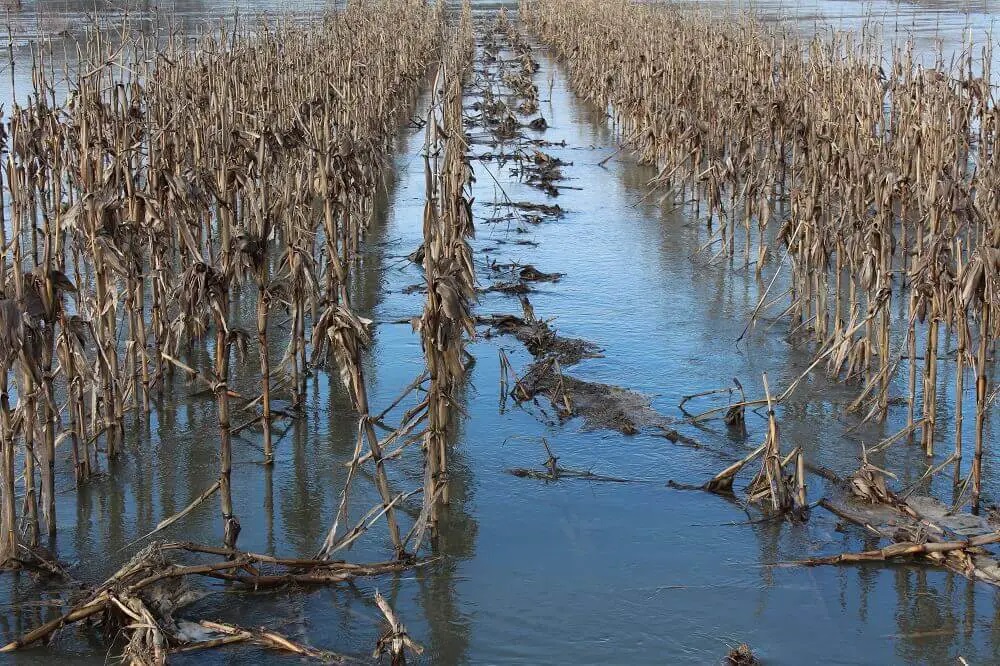
Floods are the most common natural disaster in the world, and they’re becoming more common and more deadly every year. This is the direct result of climate change. As the air gets warmer, it’s able to hold more moisture.
In fact, for every degree Celsius rise in temperature, the air can hold 7% more water. This is one of the reasons floods are becoming more common as the planet gets warmer.
In August of 2017, Hurricane Harvey hit Texas, and it was the single largest rain event in U.S. history, dumping as much as 60 inches of rain in some places. According to climate scientists, Harvey flooded twice as many homes as it would have if there were no climate change.
A few years later, in July of 2021, scientists were shocked by the scale of the floods in Germany. All over the country, precipitation records were smashed, topping previous daily rainfall records by as much as 50%.
Climate scientists were expecting to see more severe floods as the planet gets warmer, but they didn’t expect the floods to be this severe, this soon. It’s a sign that scientists have been underestimating the effect climate change has on weather.
But what does flooding have to do with food? Well, floods often happen on farmland. And when that happens, crops are destroyed.
For example, in June of 2022, China experienced its heaviest rainfall in 60 years. As a result, hundreds of thousands of hectares of farmland were destroyed, especially areas where they grow rice. As a result, we’re facing the biggest rice shortage in 20 years.
That same month, Bangladesh had its worst flood in a century, displacing nearly 4 million people. Thousands of hectares of crops worth billions of dollars were destroyed, and some 24,000 farmers were affected.
At the same time, Pakistan had its worst flood in generations. At one point 1/3 of the country was underwater, and nearly 8 million people were displaced.
As a result of this flood, 1/2 of the country’s breadbasket was wiped out, and 4 million acres of crops—mostly wheat and rice—were destroyed. Afterward, the ground was too wet to plant new crops, and countless farmers had their lives ruined.
The thing I want to emphasize is that this is just the beginning.
It has taken over 50 years for humans to raise the average global temperature by 1 degree Celsius, but many scientists believe the rate of warming will double over the next 25 years, bringing us to 2 degrees of warming within the next 20 years. By then, the air will hold 14% more moisture than it did before climate change.
If floods were the only threat to our food supply, we might find ways to adapt. But unfortunately, there are other extreme weather events that do just as much damage. For example…
2. Extreme Heat Waves
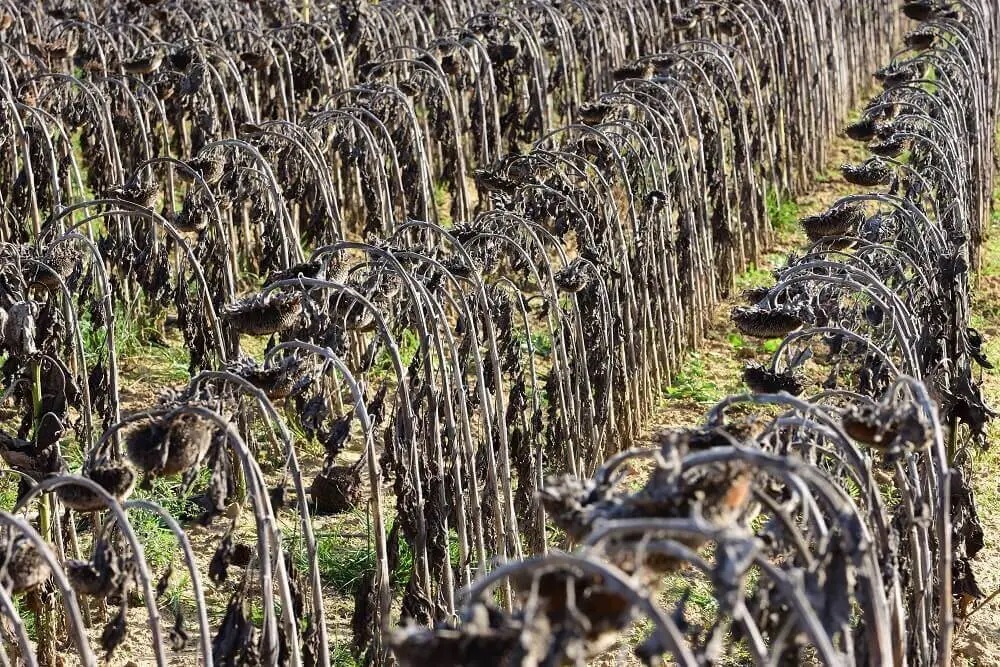
In June of 2021, the Northwest region of North America experienced the most intense heatwave since weather records began. No prior heatwave even came close.
Before this heatwave, Canada’s all-time high temperature was 113°F. Now the all-time high temperature is 121°F. Never before has a high-temperature record in Canada been broken by so much. And the previous record wasn’t just broken on one day, but three days in a row.
Climate scientists were shocked by the severity of this heatwave, and it has caused many of them to revise their predictions for future warming. The temperatures were so far outside the normal range that over one billion sea creatures along the coast cooked to death.
About a year later, in 2022, China experienced the longest and hottest heatwave ever recorded. According to climate scientists, no other heatwave compares as this one went on for weeks. (The Pacific Northwest heatwave only lasted a few days.)
It was so bad that there were rolling blackouts across the country as the increased use of air conditioners strained the power grid. Those without power had to seek air conditioning in stores and subway stations.
At the same time, Europe also experienced its hottest summer on record. Great Britain reached its highest temperature ever recorded, 104°F, a temperature scientists didn’t expect to see for years.
It’s funny how some people accuse climate scientists of being alarmists. If that were so, then we would be seeing weather that isn’t as extreme as scientists predict. Instead, climate scientists are continually being caught off guard by severe heatwaves. They say parts of the world are on the brink of sustained heat beyond human tolerance, and it’s happening decades earlier than expected.
This is a major problem for our food supply. There is a limit to how much heat our crops and livestock can withstand, and we’re starting to breach those limits.
Last year in the United Kingdom, millions of factory farm chickens died on a day with record-high temperatures. Chicken farms have ventilation systems, but even that wasn’t enough to prevent the chickens from dying of heat exhaustion.
Over in the United States, thousands of cattle died during a heatwave in Kansas. Normally, cows that die of heat stroke are processed into animal food and fertilizer, but there were so many dead cows that the processing facilities were overwhelmed, and the carcasses were dumped into a landfill.
India and Pakistan also experienced record-high temperatures in 2022. It got as hot as 120°F along the border between the two countries.
This is bad news for India’s wheat-growing region, which experienced temperatures over 100°F in April. According to farmers, the heat caused the wheat crops to mature faster, which shriveled the size of the grains and reduced overall yields.
This extreme heat is why the Indian government decided to ban exports of wheat, despite their promise to make up for the lack of grain exports from Ukraine. But they felt they had no choice as several regions saw their wheat harvests decline by as much as 20%.
Right now, the world can handle a few heat waves and slightly lower crop yields. But at this point, we are seeing record-breaking heatwaves every single year. What will happen in 10-20 years when there are a billion more people to feed and heat domes form over multiple breadbaskets around the world?
We know the answer: Higher food prices, food shortages, and starvation.
3. Persistent Droughts
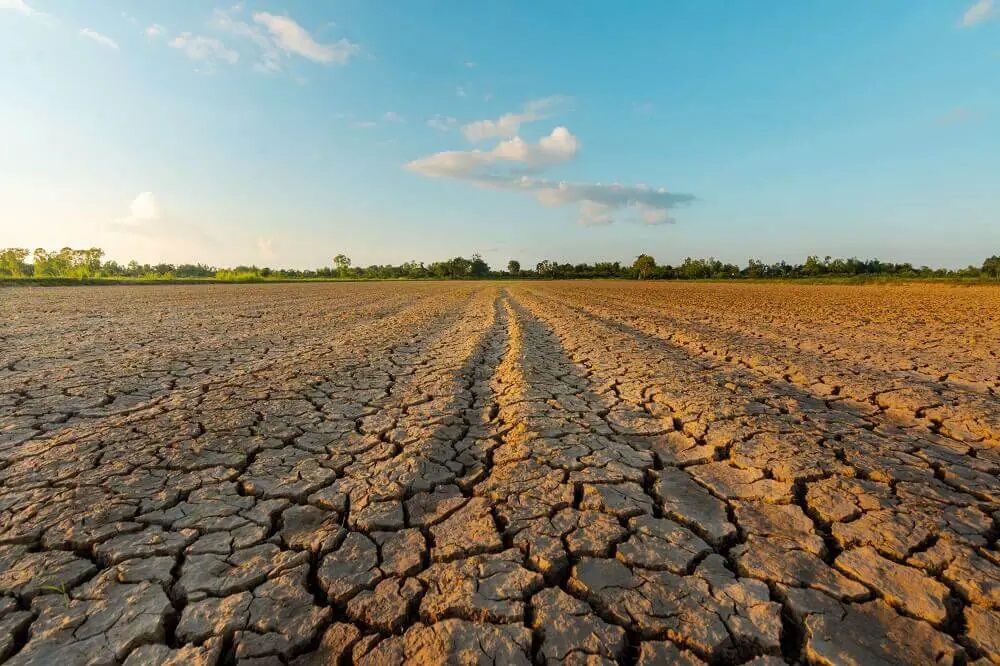
It isn’t just heat that kills crops. Droughts are an even worse problem, and across the world, we are seeing some of the worst droughts in centuries.
Climate scientists predicted this decades ago. As climate change intensifies, wet areas will get wetter and dry areas will get drier. So places that don’t get much rain are drying out, and places that normally get a lot of rain are being flooded. The world still has the same amount of water; it’s just falling in the wrong places.
Europe, for example, is experiencing its worst drought in 500 years according to the European Commission’s Global Drought Observatory. River levels have gotten so low that ancient ships, barges, and even villages have emerged from the water.
Of all the artifacts that have emerged, the most unnerving are the “hunger stones.” Centuries ago, during particularly severe droughts, people carved messages into stones on the sides of rivers, just above the water level. Afterward, the water levels rose and covered them up, but now most of them can be seen again.
One hunger stone can be found in the Elbe River in Czechoslovakia. The inscription says, “Wenn du mich siehst, dann weine,“ which means, “If you see me, then weep.”
Whoever wrote it understood that when water levels are this low, it means there hasn’t been enough rain to grow food for everybody. And that isn’t the only hunger stone. They are resurfacing all across Europe.
The droughts in Spain and Portugal are even worse than the rest of Europe. Research shows that they are going through the worst droughts they’ve had in 1200 years. It’s so bad that the Tagus river, which flows across the two countries, is at risk of drying up completely.
In France, the extremely dry weather is already damaging grain crops. France is the European Union’s largest producer of grain, but the drought has significantly reduced grain yields, pushing prices for wheat ever higher.
The United States is also experiencing its worst drought in 1200 years. Lake Mead and Lake Powell, the two largest reservoirs in the United States, are only at 1/3 capacity, and the water level continues to drop.
The drought is so bad that in 2022, federal managers declared the first ever water shortage along the Colorado river. That river is the source of water for 40 million people along with billions of dollars in agricultural production, and it’s only expected to get lower.
The Great Plains are even more important for food production as they provide about half of the United States’ wheat. Unfortunately, they are being ravaged by drought and wildfires. More than 80% of the region from Nebraska to Oklahoma is unusually dry, according to the National Drought Mitigation Center.
Western Oklahoma had a particularly devastating wheat crop in 2022. The drought is so bad that about half of the wheat fields were abandoned by producers.
Down in Australia, the megadrought is so bad that the country may have to abandon much of its farmland. Over the last 20 years, agricultural profits in Australia have dropped 23%, and it’s only expected to get worse.
Severe droughts are occurring all around the world in nations such as China, India, Pakistan, Ukraine, Turkey, and many others. In fact, by 2025, 2/3 of the the world population will be living in water-stressed countries.
Again, climate scientists predicted all of this a long time ago. What they didn’t predict is how quickly it would happen.
With all these megadroughts, you would think the price of food would be even higher than it already is, but farmers have made up for the lack of rainfall by pumping groundwater out of aquifers. Unfortunately, this is only a temporary solution as the aquifers are rapidly drying up.
4. Empty Aquifers
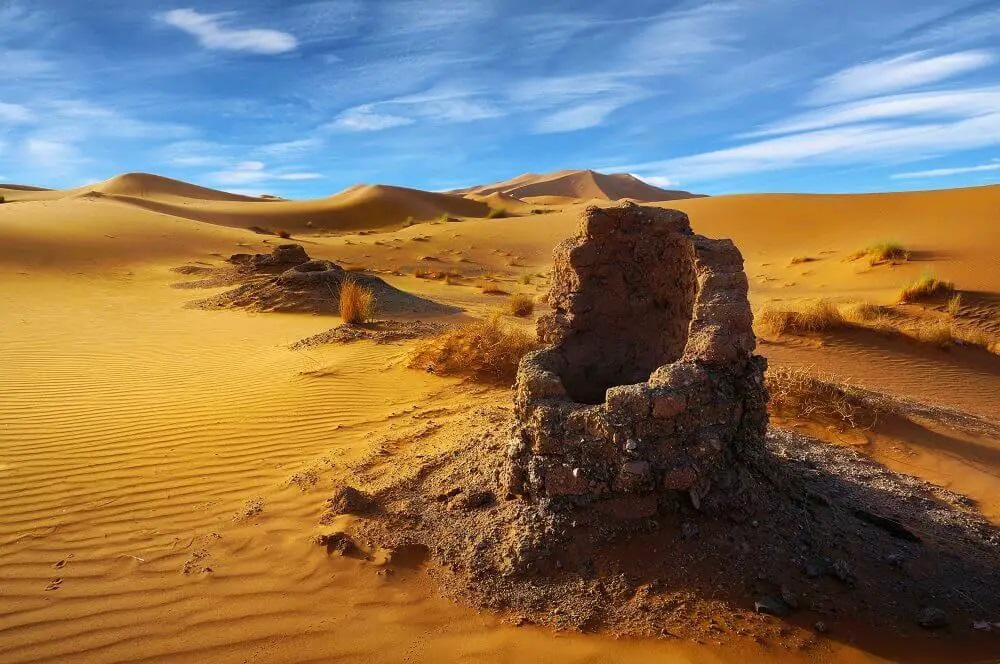
Aquifers can be found all over the planet, ranging from a few hundred to a few thousand feet beneath the surface. Although many people think of them as underground lakes or rivers, they’re actually bodies of porous rock and sediments that have been saturated with water.
If it weren’t for aquifers, we would already be in a global famine. Why? Because when there isn’t enough rain to grow food, farmers simply pump groundwater out of aquifers and use it to irrigate their crops. Now that droughts are getting longer and more becoming common, many farmers are heavily-reliant on aquifers.
Unfortunately, the world’s aquifers are steadily being depleted faster than the rain can recharge them, and there has been a lot of research that proves this. For example, in 2002, NASA and the German Aerospace Center launched a joint mission with two satellites that measure changes in the Earths’ gravity field. This mission was called GRACE (Gravity Recovery and Climate Experiment).
This mission went on for 15 years, and using the data gathered by the satellites, hydrologists were able to measure how much water is in lakes, rivers, glaciers, and aquifers (the larger the body of water, the stronger the gravitational pull).
They found that aquifers are shrinking at an alarming rate. Europe’s aquifers, for example, have been losing about 84 gigatons of water (the equivalent of all the water in Lake Ontario) every single year.
In another study, researchers compiled a list of 11.8 million groundwater-well locations around the world and looked at how deep they are and what they’re used for. They found that the vast majority of new wells are being constructed deeper and deeper, which implies that groundwater tables are getting lower and lower.
An even more ambitious study, published in the journal Science, examined construction records for 39 million wells across 40 countries. They compared the depth of the wells with groundwater levels and found that millions of wells around the world only extend a few meters below the current water level, putting them at risk of drying up in the near future.
In fact, researchers concluded that as much as 20% of the world’s groundwater wells are facing imminent failure, which would deprive hundreds of millions of people of freshwater.
As the researchers said, “the consequences of millions of wells running dry, and perhaps millions more in the decades to come, would be severe and unparalleled at such a scale in human history.”
You might think this is only a problem for third-world nations experiencing severe drought, but you’d be wrong. One aquifer in danger of drying up is the Ogallala aquifer, which covers about 175,000 square miles across the Great Plains. Since 1940, the Ogallala aquifer has shrunk by at least 30%, and the water table is dropping by about 2 feet per year.
This is a problem because the American Midwest is a major part of the global food supply, producing more than 25% of the world’s corn and soybeans. Experts at The Kansas Water Authority have warned that if farmers and ranchers don’t stop pumping water out of the Ogallala aquifer, eventually the water will run out and the entire region will face economic collapse.
As bad as this is, there’s another threat to our food supply that is even more dangerous and more imminent.
5. Fertilizer Shortages
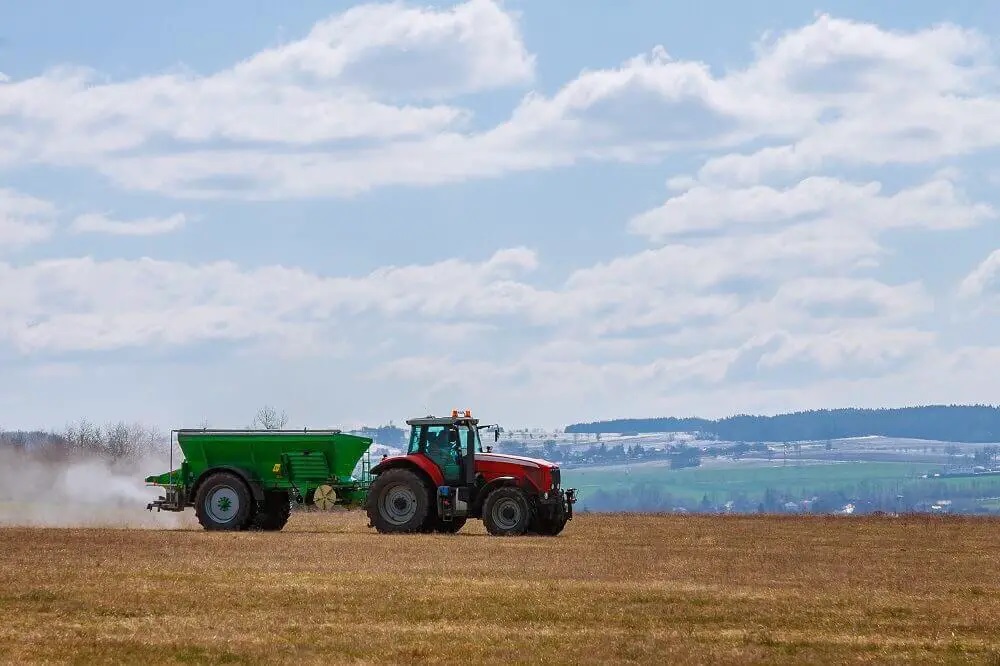
Most people have no idea how much our civilization depends on fertilizer for its existence. If it weren’t for farmers using massive quantities of fertilizer on their crops, the global population wouldn’t have ballooned from 4 billion to 8 billion over the last 50 years.
In fact, without synthetic fertilizer, half the world would starve, which is why it’s so terrifying that we are running out of the ingredients we need to make it.
Synthetic fertilizers are sometimes referred to as NPK fertilizers. NPK stands for nitrogen (N), phosphorous (P), and potassium (K is the chemical symbol for it). Let’s start with nitrogen.
Nitrogen
Nitrogen is a crucial building block of DNA and therefore essential for plant growth. If the soil on a farm doesn’t have enough nitrogen, the crops will grow slowly and produce small yields.
Up until about a century ago, farmers added nitrogen to their soil by spreading manure and compost or growing nitrogen-fixing plants such as beans. This worked, but it had its limits.
Then in 1913, a chemist named Fritz Haber discovered a way to convert the nitrogen gas in the atmosphere into ammonia, which could be used in fertilizer. Shortly thereafter, an engineer named Carl Bosch invented a machine that did exactly that.
This came to be known as the Haber-Bosch process, and it is one of the most important scientific achievements of the 20th century. Countries began using this process to produce huge quantities of fertilizer packed with nitrogen, allowing farmers to grow much more food in the same amount of space.
One of the most important ingredients in this process is natural gas. In order to produce ammonia, the nitrogen in the air is combined with hydrogen from natural gas. So the higher natural gas prices are, the more expensive fertilizer is.
And according to the IEA, we we are getting close to peak natural gas. Discoveries of natural gas peaked back in 1970, and since then, it has gotten harder and harder to find new sources.
This means the price of natural gas has nowhere to go but up, which means the price of fertilizer will go up, which means the price of food will go up. Our entire food production system is dependent on a finite resource that could be gone in a matter of decades.
Phosphorous
Phosphorous is also an essential ingredient in modern fertilizers. It mainly comes from huge deposits of ancient bird and bat feces, and it can be found in many places around the world.
Plants need phosphorous in order to convert the sun’s energy into biomolecules, which are necessary for photosynthesis. Without enough phosphorous, plants struggle to grow, and they produce few, if any, edible parts.
Because of this, phosphorite rock is very valuable, and companies have been mining it wherever they can find it, even if it means destroying local ecosystems. The small island nation of Nauru, for example, has been decimated by phosphorite mining.
Currently, over 70% of global phosphorite reserves are in Morocco. The next largest amount is in China, which has a mere 5% of global phosphorite reserves. Even though China still has more phosphorite than every nation save for Morocco, they are still limiting exports of phosphorous because they understand how valuable it is.
As with natural gas, phosphorous is a finite resource. And now, it looks like we’re approaching peak phosphorous. In fact, it could happen as soon as 2030, and at current consumption rates, phosphorite rock will be all gone by the end of the century.
This is a huge problem as there are no known substitutes for phosphorous in fertilizer. As it becomes more scarce, its price will go up, which means the price of fertilizer will go up, which means—you guessed it—the price of food will go up.
Potassium
And then there’s the third crucial ingredient in NPK fertilizers: potassium. Fortunately, there are still plenty of potash deposits all over the planet, so we won’t be running out of it any time soon.
However, extracting potassium requires a lot of energy. First, diesel is required for the machinery that crushes the rocks. Then, an energy-intensive process separates the potassium from the rest of the minerals.
So as with most things, the higher the price of energy, the higher the price of potassium. As the world approaches peak oil (which may have already happened in 2018), mining potash and isolating potassium will become more and more expensive, driving up the cost of fertilizer.
As I already made clear, higher fertilizer prices mean higher food prices. Governments can subsidize farmers, making it easier for them to afford fertilizer, but there will come a point when there simply isn’t enough fertilizer to go around, and no amount of money can solve that problem.
6. Topsoil Erosion
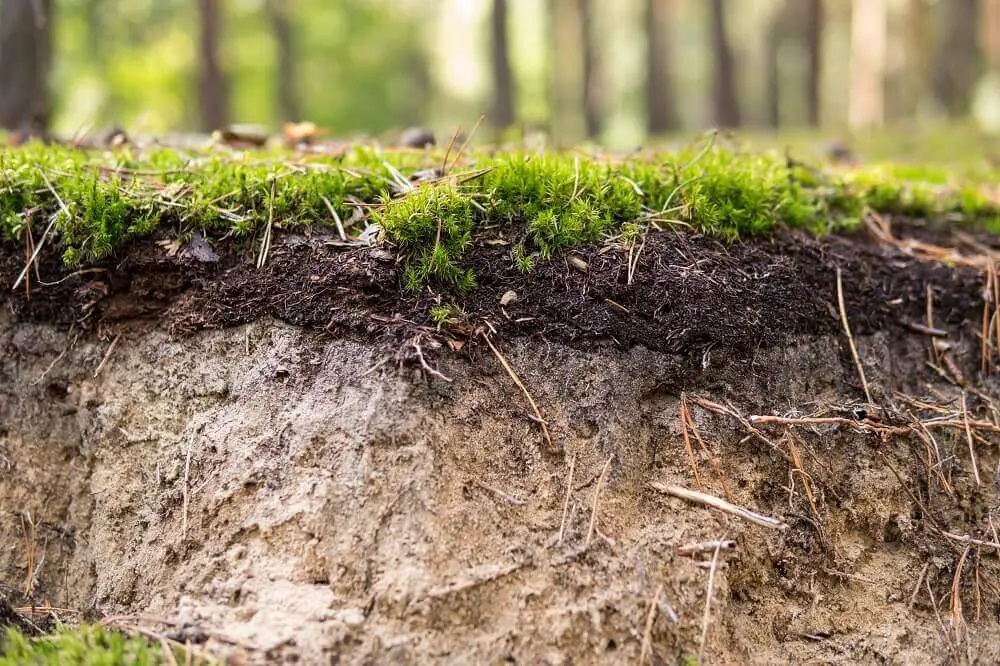
Most people don’t even know what topsoil is, which is amazing to me because without topsoil, we wouldn’t even exist. As Paul Harvey once said, “Man – despite his artistic pretensions, his sophistication, and his many accomplishments – owes his existence to a six inch layer of topsoil and the fact that it rains.”
Topsoil isn’t just dirt—it’s life. Every handful of topsoil contains billions of microorganisms like bacteria, fungi, and tiny bugs and plants, along with countless minerals like nitrogen, phosphorous, and potassium (see the previous section). All these things work together to create an environment in which food can grow.
95% of our food comes from topsoil either directly through crops or indirectly through livestock, which means topsoil is extraordinarily valuable. It’s even more valuable when you consider that it takes 500 years for mother nature to form a single inch of it.
Unfortunately, the U.S. is using up its topsoil 10 times faster than it can regenerate. It’s even worse in China and India, which are both losing their topsoil 30-40 times faster than it can regenerate. According to the UNCCD, 12 million acres of agricultural land and 75 billion tons of fertile soil are lost every year due to drought, desertification, and degradation.
In fact, half the world’s topsoil has been lost in the last 150 years. And before you think, “Well, that’s only half in 150 years,” remember that there are five times as many people today, which means we’re using up the remaining topsoil faster and faster. That’s why some experts believe we only have 50 years of topsoil left.
And it’s not like we’ll be fine for the next 49 years and suddenly on year 50, all our crops will die. Rather, the problem of topsoil erosion will get exponentially worse in the coming decades, and we’ll see widespread food shortages long before the last of it is gone.
At the moment, 1/3 of the world’s soil is acutely degraded due to agriculture, but the UN warns that up to 90% will be degraded by 2050. As the soil erodes, most of it will end up in rivers, making them more prone to flooding and polluting the water with synthetic fertilizers, pesticides, and herbicides.
In the coming decades, crop yields will decline at ever-faster rates, and eventually most of our farmland will be abandoned. So what can be done?
For one thing, farmers can change the way they plant crops. Instead of intensive tilling, they can switch to no-till farming methods. They can also plant a more diverse range of crops and grow cover crops in order to rejuvenate the soil every year. Doing these things will help the bacteria and fungi in the soil which in turn will support beneficial plants and insects.
Although these methods have become more popular in recent years, most farmers still don’t use them because of the upfront cost. It’s easier to keep doing things the way they always have rather than invest in new methods and equipment, especially now that fertilizer has gotten so expensive.
In all likelihood, we will continue eroding our topsoil until it’s mostly gone. Unless we find ways to grow huge quantities of nutritious food without soil, we’re done for.
7. Dying Insects
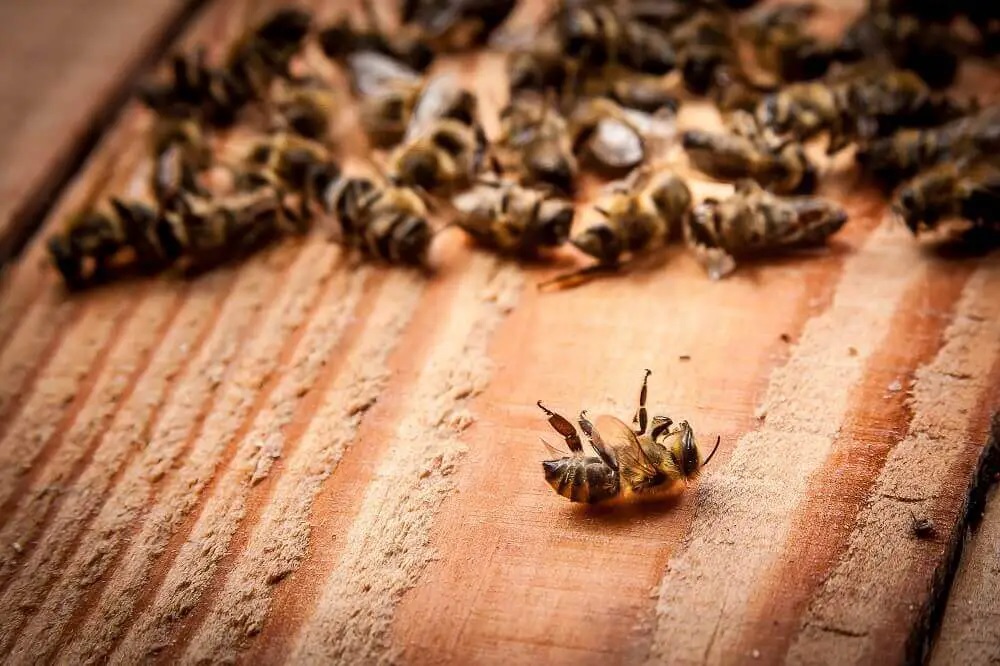
As scary as the loss of our topsoil is, the decline of insects around the world is even more frightening. That is, if you understand how important insects are.
There are over 900,000 species of insects on Earth, which is nearly 2/3 of the 1.5 million documented animal species. Collectively, arthropods (which includes insects, arachnids, and crustaceans) weigh 17 times more than all of humanity.
This isn’t a planet of humans or even of mammals; it’s a planet of bugs. Beetles alone make up 24% of all known animal species! Without insects, nearly every ecosystem on earth would collapse. But why?
Insects form the base of complex ecological food webs all over the world. E.O. Wilson called them “the little things that run the world.” They perform all sorts of essential services that we rely on every day without even realizing it.
For example, insects like bees and butterflies pollinate 75% of our crops including broccoli, cabbage, cocoa, coffee, onions, tomatoes, and most fruits. Without pollinators, we wouldn’t have these foods.
But pollination is just one of the reasons we need insects. Dragonflies keep disease-carrying mosquitoes in check, lacewings keep agricultural pests like aphids from destroying crops, and beetles remove dung from the environment and churn the soil, keeping it healthy.
We also need insects to break down dead plants and animals and recycle their nutrients back into the ecosystem. Only insects can clean up the trillions of pieces of organic debris that accumulate every year. Bacteria can’t do it alone.
But above all, we need insects to form the base of the food chain, feeding countless birds, reptiles, amphibians, and mammals. Without insects, food webs around the world would collapse, and farmers and ranchers wouldn’t be able to produce enough to feed us all. All of this is why scientists are warning that the decline of insects could massively increase food bills.
If all insects disappeared, hundreds of thousands of plant species would vanish, and birds and reptiles would be mostly extinct in a matter of months. Rodents would also be in trouble, and soon after, other mammals would also struggle to find food.
The end of insects would literally mean the collapse of nature. And the collapse of nature is exactly what’s happening. Insect populations all around the world are undergoing a frightening decline that is “tearing apart the tapestry of life.”
In the UK, flying insect numbers have plunged by 60% since 2004. In Germany, they’ve declined by 75% since 1990. In Denmark, they’ve declined by 80% since 1997. And in Puerto Rico, they’ve declined by at least 80% over the last four decades.
And keep in mind that most of these studies were done in protected areas like nature reserves. The numbers are likely much worse around cities and farmland.
Overall, invertebrate populations (which includes insects) have fallen by 45% in 40 years. Think about that for a moment. Nearly half the world’s insects wiped out in half a human lifetime. Where will we be in another 40 years?
Currently, the total mass of all insects is shrinking by as much as 2.5% per year, which could lead to 40% of all insect species going extinct over the next few decades. At this rate, insects could be almost completely gone in less than a century. That’s why some scientists are calling it the Insect Apocalypse.
So why is this happening? In a word: humans. As explained in this this paper, published in the journal Biological Conservation, the main causes are habitat loss, pollution, biological factors, and climate change.
Habitat loss is pretty straightforward. As we build more roads, towns, houses, factories, and shopping centers; and as we clear-cut forests for grazing land and giant monoculture farms, we leave less room for insects. There is no solution that will allow us to keep expanding the human enterprise while leaving plenty of land for insects.
Pollution comes in many forms. There are synthetic pesticides and fertilizers, which are deadly to most insects—especially bees—but there’s also noise pollution. Loud noises can interfere with the mating and hunting patterns of insects that rely on acoustic signals to find food or communicate with one another.
Then there’s light pollution. If you’ve ever seen a picture of Earth from space at night, you can see how much we’ve changed the nocturnal world. Artificial light confuses insects that rely on the daily cycle of day and night to find food, mates, and places to sleep that are safe from predators.
And of course, there’s air pollution. This is a big one. Scientists estimate that there are 70% fewer pollinators due to air pollution. The reason is that air pollution changes the scent of plants. This confuses bees and butterflies, making it harder for them to find flowers to pollinate.
Biological factors that kill insects include pathogens and invasive species which destroy local insect populations as human activity expands into more and more areas.
As people travel around the world in boats and planes, they inadvertently bring along insects such as the varroa mite, which feeds on the bodily fluids of honeybees. A few decades ago, the varroa mite was confined to Asia, but now they’re all over the world, contributing to the decline of honeybee populations.
Climate change is becoming a bigger problem for insects as weather patterns that species adapted to over thousands of years suddenly change. For example, many insects emerge in the spring when it gets warmer and more food becomes available, but if a winter heatwave comes along (like the one in Europe in January 2023), the insect eggs can hatch before there’s enough food to feed them.
And that’s just one example. Climate change is rapidly changing ecosystems around the world, causing entire areas to change from forest to savannah or from savannah to desert, and it’s happening faster than insects can adapt. Additionally, severe weather events like record-breaking floods and heatwaves can cause mass die-offs and disrupt insect life cycles.
Scientists have published a warning to humanity on insect extinctions, but few people are paying attention. If what you’ve read so far hasn’t frightened you, then maybe this will…
Throughout Earth’s history, there have been five mass extinction events. The vast majority of insects survived these extinctions, except for one: the Permian-Triassic extinction. It killed 70% of life on land and 90% of life in the oceans, which is why it’s often referred to as The Great Dying.
Today, all of our data suggests that insect populations are declining faster than they did during The Great Dying.
More Reasons There Will Be Food Shortages
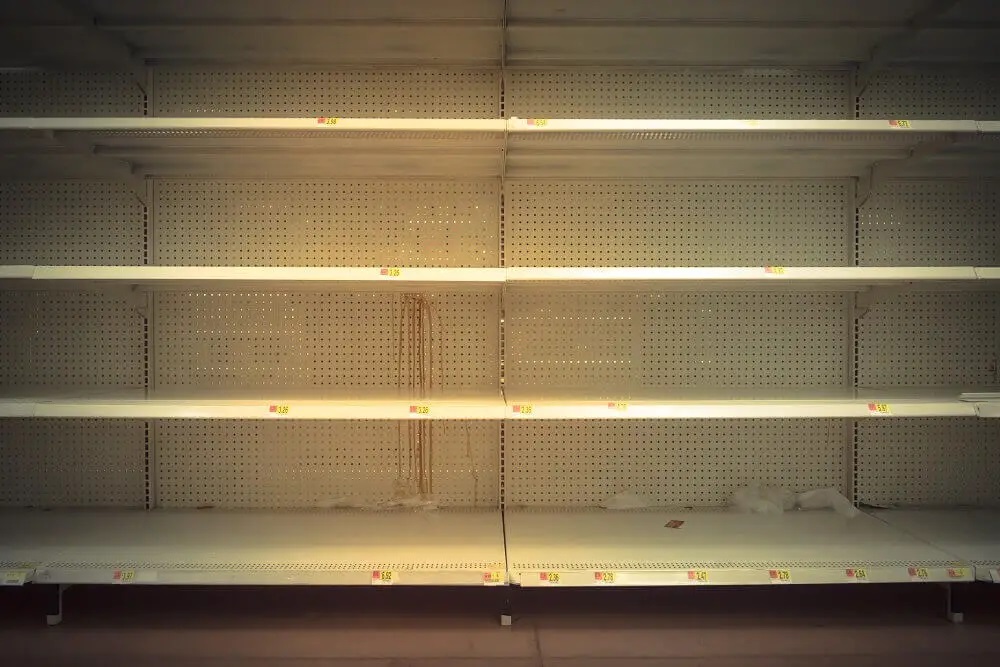
Originally, this article was going to have 11 reasons, but it’s already way longer than I expected, so I’m going to save some of the other reasons for future articles. Here’s a little preview:
Despite the overall decline of insects, the kinds that eat our crops are actually on the rise and will consume a lot more of our food as temperatures increase. Already, the amount of insects consuming our crops is unprecedented.
Another threat to our food supply is diseases. Currently, we’re witnessing the worst avian flu pandemic in history. This fast-spreading disease killed 43 million hens last year, which is part of the reason eggs and poultry have been so expensive. And this won’t be the last livestock pandemic. Factory farming is creating a perfect storm for more pandemics.
Yet another threat is the collapse of fisheries. Currently, about 3 billion people rely on fish as part of their daily diet, but before long, there won’t be enough fish for everyone. There are many reasons for this: climate change, warmer waters, pesticides, microplastics, overfishing, and more. We are well on our way to wiping out almost all sea life.
And of course, there’s the rapid growth of the human population, which will put even more strain on our food supply. Although birth rates have been declining, we continue to add about 80 million people to the world every year.
According to the UN, global demand for food will increase by 70% by 2050. However, I believe the global population will begin to decline long before then. Some models predict society will collapse due to food shortages by 2040.
What Should I Do?
First, you should start stockpiling food. Focus on staples like rice, beans, flour, pasta, and other basic ingredients, then learn how to cook from scratch. Yes, it takes more time, but you’ll save money and be healthier.
You should also learn how to cook without power as blackouts will become more and more common in the coming decades. Practice cooking meals on the grill or over a campfire, and avoid using electric appliances like toasters and microwaves.
Additionally, you should start growing your own food. Focus on high-calorie crops and learn how to preserve your harvest by canning and dehydrating. Home-grown food is much healthier than store-bought food, and it’s more satisfying to enjoy food you grew yourself.
You might be wondering, what’s the point of growing and stockpiling food if civilization is going to collapse and we’re all going to die?
That’s a fair question. It’s almost impossible to grow enough food to feed a family and be completely self-sufficient, and even if you could, you’d have to deal with countless people trying to steal your food or take over your homestead.
Here’s how I look at it: As society unravels, there will be temporary disasters along the way. Long before the collapse is complete, there will be temporary blackouts and and temporary food shortages. I believe it’s worth having enough supplies to live through those times and maybe even help your neighbors.
Remember, no one knows the future. Although some experts believe humans will go extinct by the end of the century, there are others who believe there will still be a few billion people left. I believe you should do everything possible to give yourself or your children a fighting chance at being some of those people.
If the day comes when all the food is gone and death is imminent, so be it. In fact, I encourage people to make peace with that possibility. But as long as there’s a chance that you or a loved one could survive and help plant the seeds of a new, sustainable society in the future, you shouldn’t give up.


Member discussion